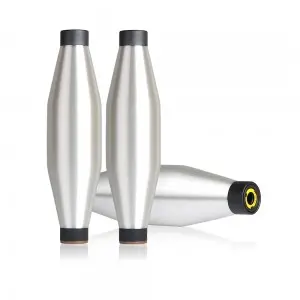The difference between hot melt yarn and water-soluble yarn is mainly reflected in three aspects: different concepts and characteristics, and different uses. Please check the following analysis.
1. Different concepts
Water-soluble yarn is a soluble yarn made from vinylon staple fibers through ring spinning. In short, the yarn can dissolve like salt when it is fully exposed to water. It has good water solubility and can be dissolved in water at about 0-100 degrees according to different needs. In short, the yarn can dissolve like salt when it is fully exposed to water.
Hot melt yarn, also known as low melting point yarn or fusible yarn, is one of the most rapidly developing functional fibers in recent years. As the name suggests, when the temperature reaches the melting point, the hot melt yarn will gradually melt and bond other yarns together. Hot melt yarn is divided into polyester hot melt yarn and nylon hot melt yarn. The melting point can be controlled between 85℃ and 180℃ by adjusting the material properties.
Nylon hot melt yarn is made by spinning low melting point polyamide. Low-melting-point polyamide is a modified polyester. The nylon hot-melt yarn made by spinning low-melting-point polyamide has the advantages of low melting point, high thermal bonding strength and stable physical and chemical properties.
㈡ Different characteristics
Characteristics of water-soluble yarn
① Natural biodegradability: water-soluble fiber can be naturally biodegraded or rapidly degraded in activated sludge after dissolving in water, without any pollution to the environment.
② The hygroscopicity is better than that of vinylon staple fiber, and the moisture regain under standard conditions is 5.6.0%, and the spinning performance is good.
③ Good weather resistance: Among all fibers, it is second only to acrylic fiber, and its strength decreases slightly after long-term exposure.
④ Good mechanical properties. (Strength, plasticity, hardness, impact toughness, multiple impact resistance and fatigue limit, etc.)
⑤ Good water solubility, can be dissolved in hot water according to different needs.
Characteristics of hot melt yarn
Performance characteristics of nylon hot melt yarn:
①Good dyeability. Polyamide fiber is more difficult to dye than natural fiber, but still easier to dye than other synthetic fibers. Generally, it is dyed with acid dyes.
②High breaking strength. The breaking strength of polyamide fiber filaments for textile use is 5.0~6.4g/d.
③Good wear resistance. The wear resistance of polyamide fiber is the best among all textile fibers.
④Low melting point. The melting point of nylon hot melt yarn is as low as 90˚C.
Polyester hot melt yarn is mixed with conventional polyester or other fibers to produce non-woven fabrics or knitted or woven into thermal bonding fiber products. It has the characteristics of soft hand feel, high strength, washability, crispness, easy care, and no environmental pollution.
Post time: Sep-30-2024

